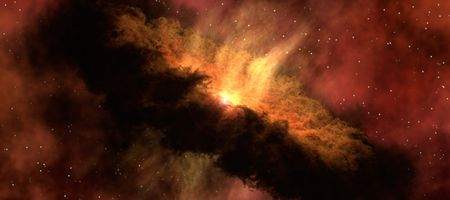Complex organic compounds probably formed easily in the early solar system, say scientists at the University of Chicago and NASA Ames Research Center.

The team simulated the dynamics of the solar nebula – the cloud of gas and dust from which the solar system formed – and found that over a simulated million-year period, every dust particle within the nebula experienced the conditions needed for organics to form.
“Whenever you make a new planetary system, these kinds of things should go on,” says Scott Sandford, a space science researcher at NASA Ames. “This potential to make organics and then dump them on the surfaces of any planet you make is probably a universal process.”
When high-energy ultraviolet radiation bombards simple ices like those seen in space, says sandford, a rich cocktail or organics results.
These include amino acids, nucleobases and amphiphiles, which make up the building blocks of proteins, RNA and DNA, and cellular membranes, respectively.
And, the models showed, particules would indeed be exposed to the radiation – given enough time. The simulations revealed that the turbulent environment of the protoplanetary disk mixed particles throughout the nebula, raising them to high altitudes within the cloud, where they could become irradiated.
“Taking what we think we know about the dynamics of the outer solar nebula, it’s really hard for these ice particles not to spend at least part of their time where they’re going to be exposed to UV radiation,” says Fred Ciesla of UChicago.
“It was surprising how all these things just naturally fell out of the model. It really did seem like this was a natural consequence of particle dynamics in the initial stage of planet formation.”






